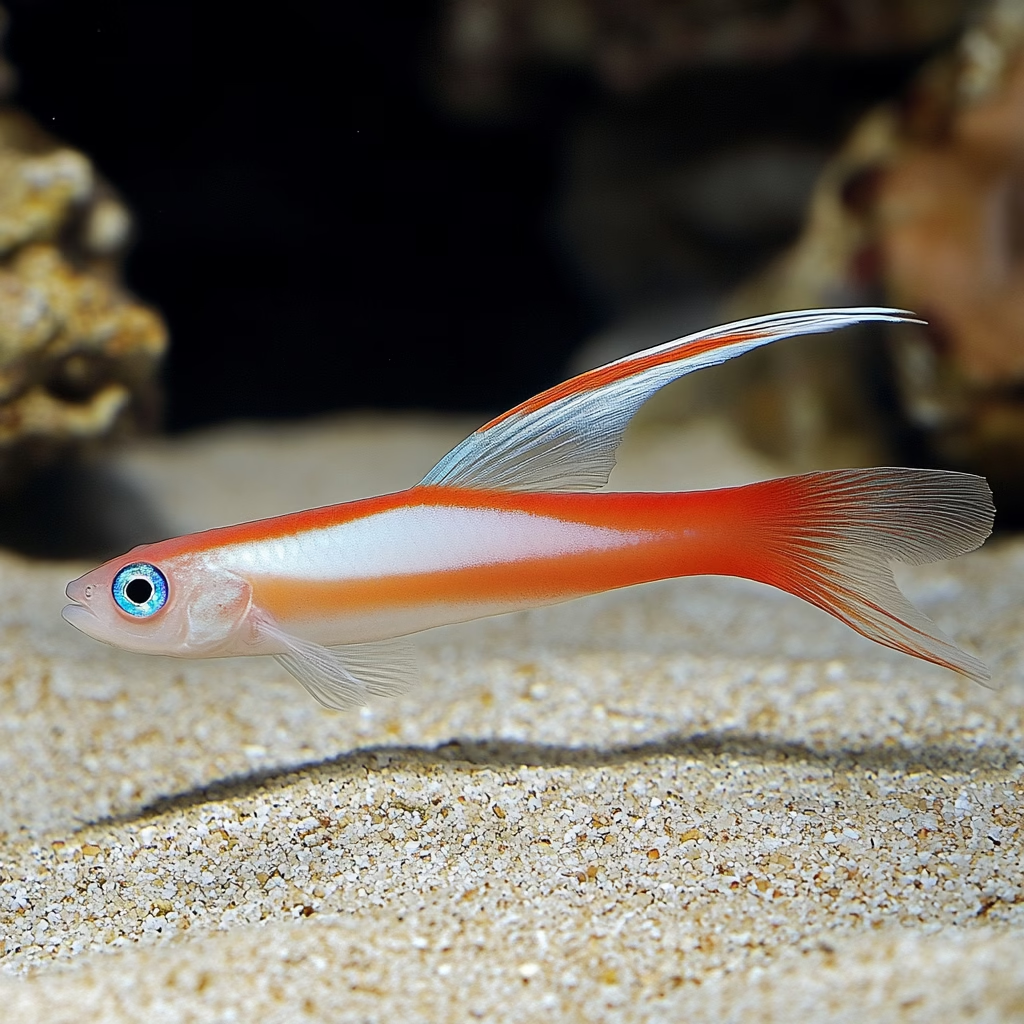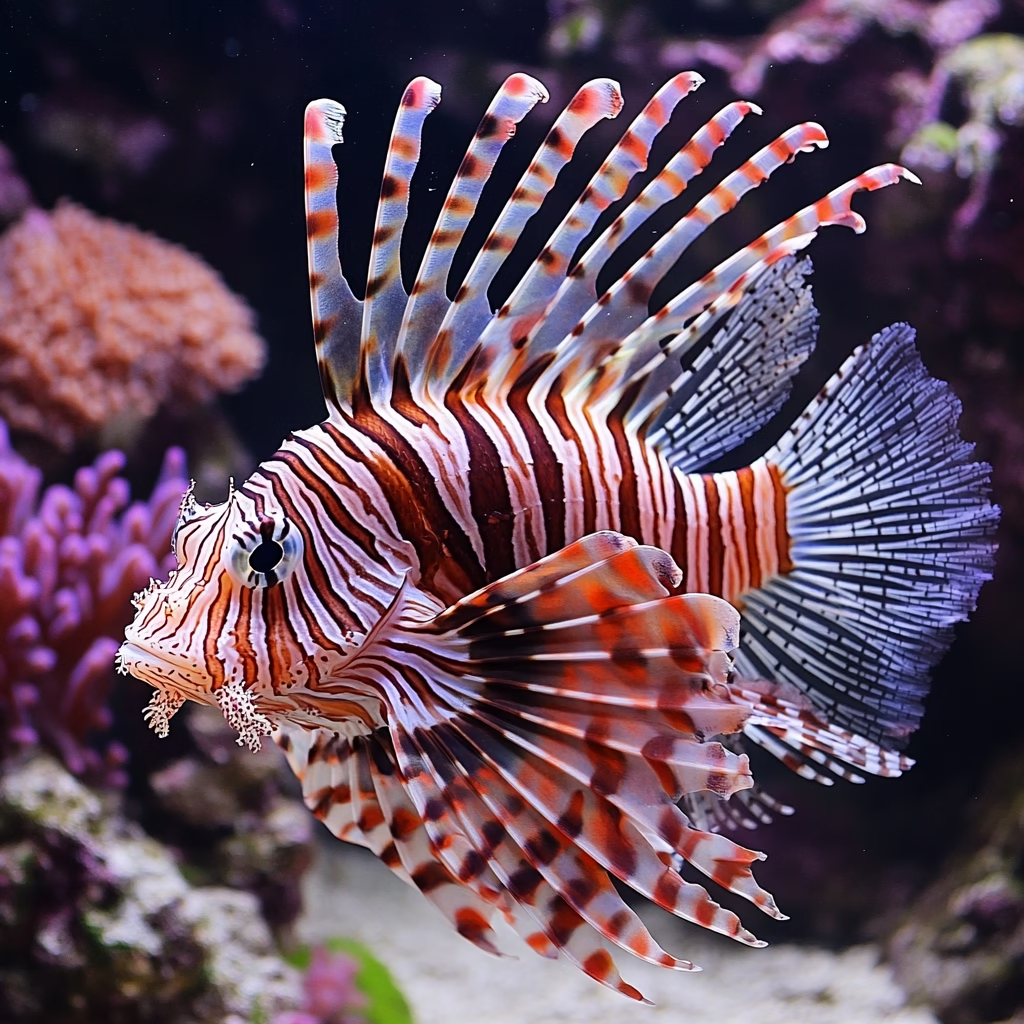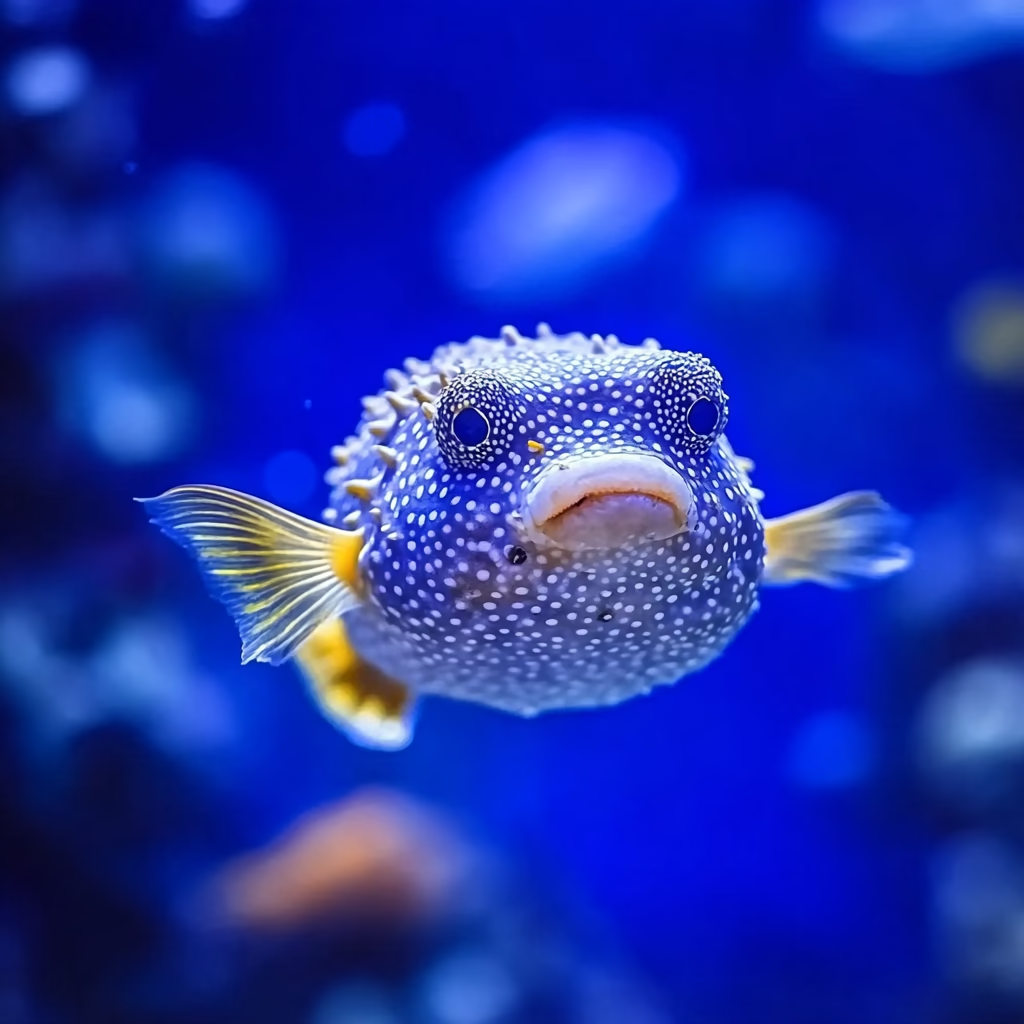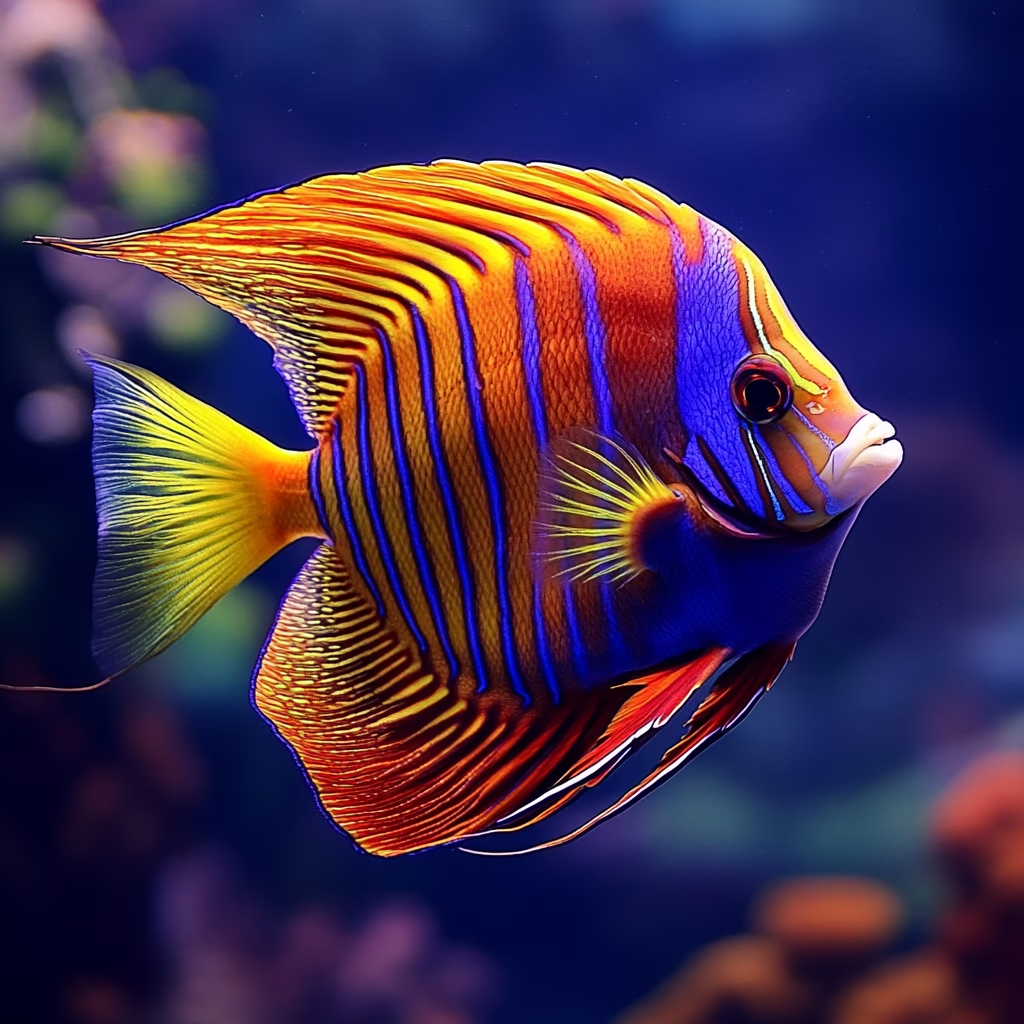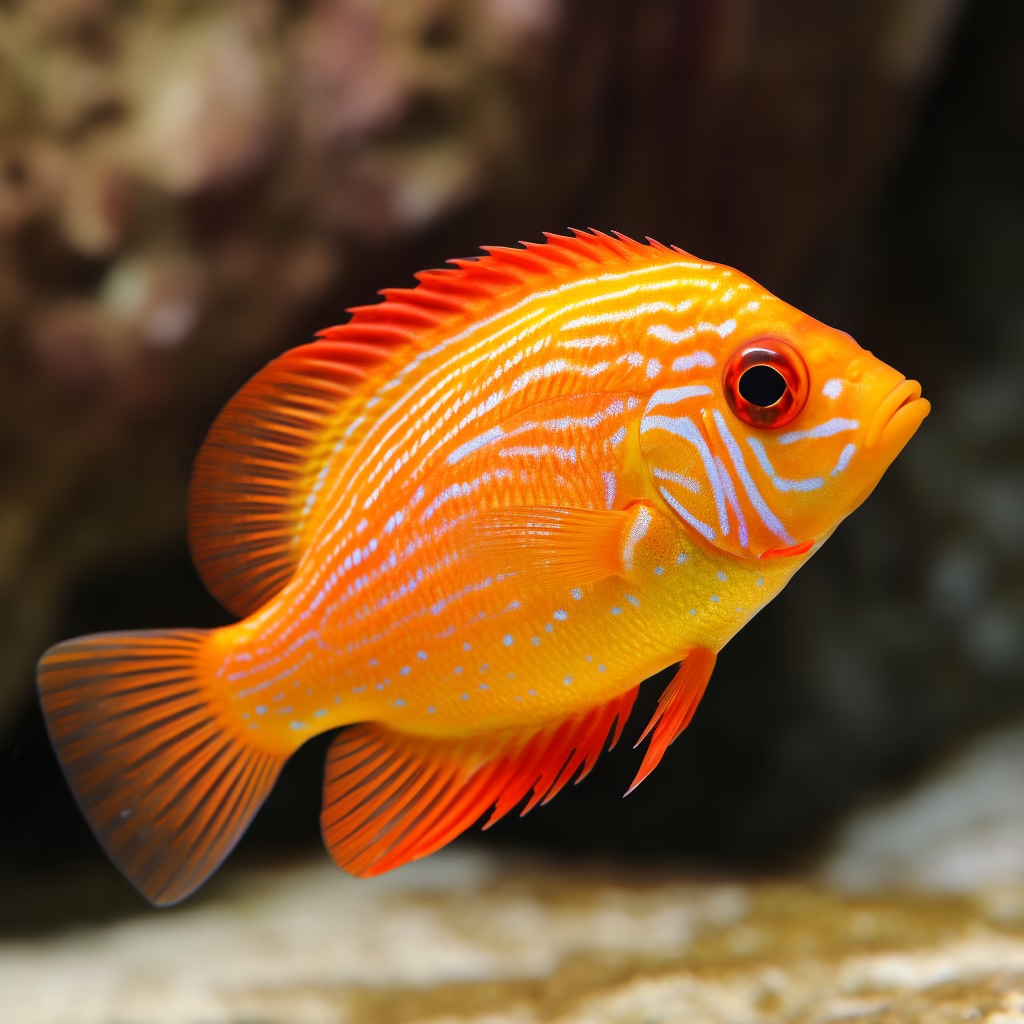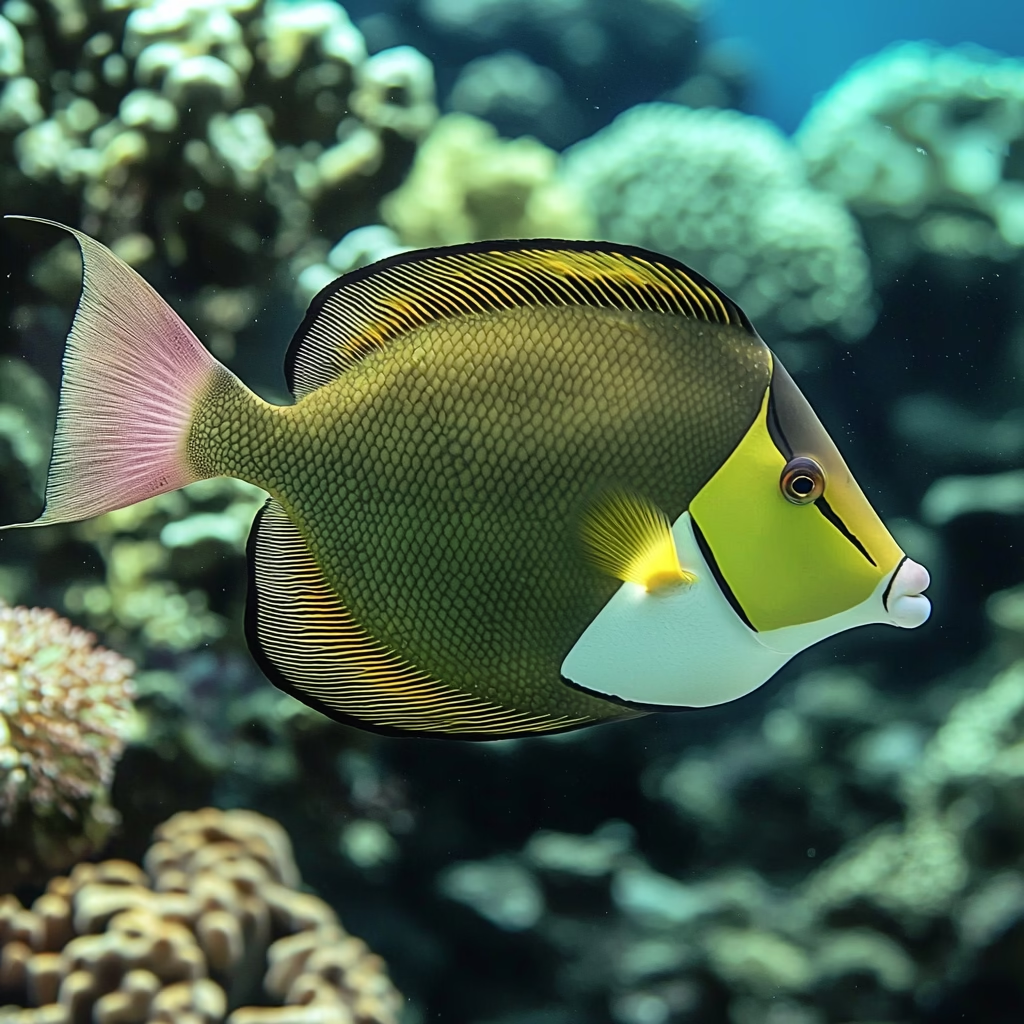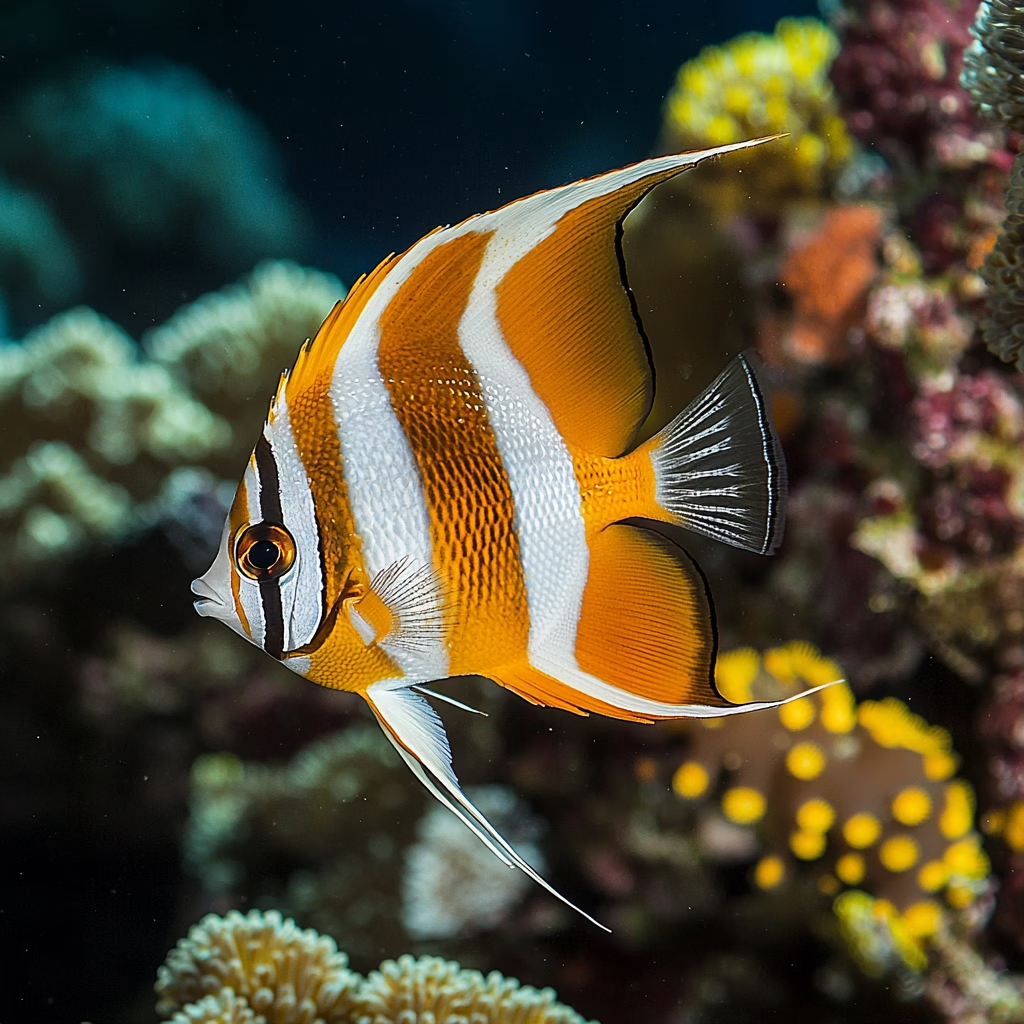Firefish gobies are among the most captivating and popular additions to marine aquariums, known for their striking appearance and peaceful temperament. With their slender bodies, vibrant coloration, and distinctive dorsal fin that resembles a flame when erect, these small yet charismatic fish have earned their place as favorites among both beginner and experienced aquarists. This comprehensive guide explores everything you need to know about firefish gobies, from their natural habitat and behavior to their care requirements and compatibility in home aquariums.
Understanding the Firefish Goby: Basic Characteristics
Firefish gobies (Nemateleotris species) belong to the family Microdesmidae and are native to the tropical waters of the Indo-Pacific region. Despite their common name, firefish gobies are not true gobies but are closely related. These fish typically grow to about 3-4 inches (7-10 cm) in length, making them ideal residents for nano reef tanks and smaller marine setups.
The most distinguishing feature of the firefish goby is its elongated first dorsal fin, which is often held erect when the fish is alert or feeling threatened. This fin, combined with their torpedo-shaped bodies, gives them their characteristic “firefish” appearance. Their swimming pattern is also unique—they often hover above the substrate with their pectoral fins rapidly beating to maintain position, darting quickly to safety when startled.
Popular Firefish Goby Species for Home Aquariums
Several species of firefish gobies are commonly available in the aquarium trade, each with its own distinctive appearance:
1. Purple Firefish Goby (Nemateleotris decora)
The purple firefish goby, also known as the decorated firefish, is perhaps the most recognizable species. Its body features a gradient that transitions from white at the head to a rich purple toward the tail. The dorsal fin displays vibrant red and orange hues, creating a striking flame-like appearance when raised. This species originates from reefs in the Western Pacific and Indian Ocean, where it typically inhabits outer reef slopes at depths of 20-70 meters.
2. Fire Goby/Red Fire Fish (Nemateleotris magnifica)
The fire goby, or red firefish, is distinguished by its creamy white head that gradually transitions to a bright red or orange body and tail. Its dorsal fin features red coloration with black margins. This species is found throughout the Indo-Pacific region, including the Red Sea, and prefers reef environments with strong currents.
3. Helfrich’s Firefish (Nemateleotris helfrichi)
The Helfrich’s firefish, sometimes called the purple firefish, displays a vibrant lavender body with a yellow head and a distinctive orange stripe running from the eye to the tail. Its vertical fins often feature red or orange highlights. This species is considered rarer and typically commands a higher price in the aquarium trade. It originates from deeper waters in the Western Pacific.
4. Exquisite Firefish (Nemateleotris exquisita)
Less commonly available but equally stunning, the exquisite firefish exhibits a pale cream body with a yellow head and distinctive red markings on its face. Its dorsal fin features a striking gradient from yellow to red. This species is native to the Western Pacific and is typically found at depths of 25-70 meters.
Natural Habitat and Behavior of Firefish Gobies
Understanding the natural environment of firefish gobies is crucial for providing appropriate care in captivity. In the wild, these fish inhabit coral reef slopes and drop-offs at depths ranging from 20 to 70 meters. They prefer areas with moderate to strong water movement and plenty of hiding spots among coral crevices and rock formations.
Firefish gobies are typically found in pairs in the wild, establishing territories around specific coral formations. They are planktivores, feeding primarily on zooplankton carried by ocean currents. Their behavior involves hovering above their chosen hiding spot, darting out to capture passing food particles, and quickly retreating to safety when potential threats approach.
One notable behavioral characteristic is their tendency to return to the same shelter consistently. They establish a “home base” within the reef structure and will defend this territory against intruders. When threatened, firefish gobies can be quite skittish, sometimes darting into their hiding place with such force that they may injure themselves if the space is too confined or has sharp edges.
Setting Up the Ideal Aquarium for Firefish Gobies
Creating an environment that mimics the natural habitat of firefish gobies is essential for their health and well-being. Here are the key considerations for setting up an appropriate aquarium:
Tank Size and Setup
While firefish gobies are small, they are active swimmers that benefit from adequate space. A minimum tank size of 20 gallons is recommended for a single firefish or a mated pair. The aquarium should be fully cycled before introducing these sensitive fish.
The tank should feature a secure lid or cover, as firefish gobies are known jumpers, especially when startled or stressed. Many aquarists have experienced the heartbreak of finding their firefish dried out on the floor after it leaped through a small opening in the tank cover.
Aquascaping and Hiding Places
Proper aquascaping is crucial for firefish gobies. The tank should include:
- Multiple hiding spots and caves formed by live rock arrangements
- Small crevices where the fish can retreat when feeling threatened
- Open swimming areas in the middle and upper portions of the tank
- Subdued lighting to mimic their deeper water natural habitat
Arrange the rockwork to create interconnected tunnels and caves, but ensure that no sharp edges are present that could injure the fish when it darts to safety. Many experienced keepers recommend creating at least two distinct “bolt holes” for each firefish in the aquarium.
Water Parameters and Conditions
Firefish gobies require stable marine conditions with the following parameters:
- Temperature: 72-78°F (22-26°C)
- Salinity: 1.023-1.025 specific gravity
- pH: 8.1-8.4
- Ammonia and Nitrite: 0 ppm
- Nitrate: below 20 ppm
- Moderate to strong water movement
- Low to moderate lighting
Maintaining excellent water quality is essential, as firefish gobies are sensitive to pollutants and fluctuating conditions. Regular water changes of 10-15% every two weeks are recommended to maintain optimal water parameters.
Feeding Your Firefish Goby
Proper nutrition is vital for the health and coloration of firefish gobies. In the wild, these fish are planktivores, feeding on zooplankton and small crustaceans carried by ocean currents. In captivity, they can adapt to a variety of foods but require regular feeding to maintain their energy levels.
Recommended Diet
A balanced diet for firefish gobies should include:
- High-quality marine flake food formulated for reef fish
- Frozen foods such as mysis shrimp, brine shrimp, and cyclops
- Enriched live foods like copepods and baby brine shrimp
- Small pieces of seafood such as finely chopped clams or mussels
Many firefish gobies initially refuse prepared foods, so it may be necessary to start with live or frozen offerings. Target feeding with a pipette or turkey baster can help ensure that the fish receives adequate nutrition, especially in community tanks with more aggressive eaters.
Feeding Schedule
Firefish gobies have high metabolic rates and benefit from multiple small feedings throughout the day. A typical feeding schedule might include:
- 2-3 small feedings per day
- Varied diet offerings to ensure complete nutrition
- Careful observation to ensure the fish is eating adequately
Be attentive to the feeding behavior of your firefish goby. Some individuals may be shy feeders and require targeted feeding methods to ensure they receive sufficient nutrition.
Tank Mates and Compatibility
Firefish gobies are generally peaceful and can be intimidated by larger, more aggressive species. Their ideal tank mates include:
Compatible Species
- Small peaceful reef fish like clownfish, royal grammas, and fairy wrasses
- Non-aggressive benthic species such as blennies and dragonets
- Peaceful invertebrates including cleaner shrimp, hermit crabs, and snails
- Most coral species, as firefish gobies are reef-safe
Species to Avoid
- Aggressive or territorial fish like larger dottybacks, damselfish, or hawkfish
- Predatory species that might view the slender firefish as prey
- Other firefish gobies (unless introduced as a mated pair)
- Fast, competitive feeders that might outcompete the firefish for food
It’s important to note that while firefish gobies can be kept in pairs, they are often territorial toward their own kind unless they are already a mated pair. Introducing multiple firefish to an established tank can lead to aggression and stress.
Breeding Firefish Gobies in Captivity
Breeding firefish gobies in home aquariums is challenging but not impossible. These fish typically form monogamous pairs in the wild, and successful captive breeding usually requires a well-established pair.
Breeding Conditions
To encourage breeding behavior:
- Provide optimal water conditions with stable parameters
- Offer a varied, nutritious diet rich in live and frozen foods
- Create suitable spawning sites such as small caves or PVC pipes
- Maintain a peaceful environment free from aggressive tank mates
When ready to spawn, the pair will clean a flat surface inside their chosen cave or crevice. The female lays adhesive eggs which are then fertilized by the male. The male typically guards the eggs until they hatch, which occurs approximately 5-7 days after fertilization.
The resulting larvae are pelagic and extremely small, requiring specialized care including green water culture and appropriately sized live foods like rotifers. Due to these demanding requirements, successful rearing of firefish goby larvae remains rare in home aquariums.
Common Health Issues and Their Prevention
Firefish gobies are generally hardy once established, but they can be prone to certain health issues, particularly during the acclimation period:
Stress-Related Problems
Stress is perhaps the most significant health concern for firefish gobies. Signs of stress include:
- Faded coloration
- Rapid breathing
- Hiding excessively
- Loss of appetite
- Erratic swimming behavior
To minimize stress, provide ample hiding places, maintain stable water conditions, and ensure appropriate tank mates. A quarantine period of 2-4 weeks is highly recommended before introducing a firefish goby to the main display tank.
Parasitic Infections
Like many marine fish, firefish gobies can be susceptible to parasites such as marine ich (Cryptocaryon irritans) and marine velvet (Amyloodinium ocellatum). Preventative measures include:
- Quarantining all new additions
- Maintaining optimal water quality
- Providing a nutritious diet to support the immune system
- Observing for early signs of infection such as spots, scratching, or rapid breathing
Treatment options for infected fish typically involve copper-based medications in a separate hospital tank, as copper is toxic to invertebrates and cannot be used in reef tanks.
Conclusion: Why Firefish Gobies Make Excellent Reef Tank Residents
Firefish gobies represent an almost perfect balance of attractive characteristics for the marine aquarium hobbyist. Their striking appearance adds vibrant color and movement to any reef display, while their peaceful nature makes them compatible with a wide range of tank mates. Despite their somewhat shy disposition, these fish become bolder over time and often develop distinctive personalities that endear them to their keepers.
For beginners, the hardier species like the red firefish (Nemateleotris magnifica) offer an accessible entry point into keeping more specialized marine fish. For experienced aquarists, the challenge of creating the perfect environment for rarer species or attempting breeding projects provides ongoing engagement with the hobby.
With proper care, attention to their specific needs, and a suitable environment, firefish gobies can thrive in captivity for five years or more, bringing a touch of the exotic coral reef into your home aquarium. Their elegant form, mesmerizing swimming pattern, and brilliant coloration make them living jewels that continue to captivate marine aquarium enthusiasts worldwide.

